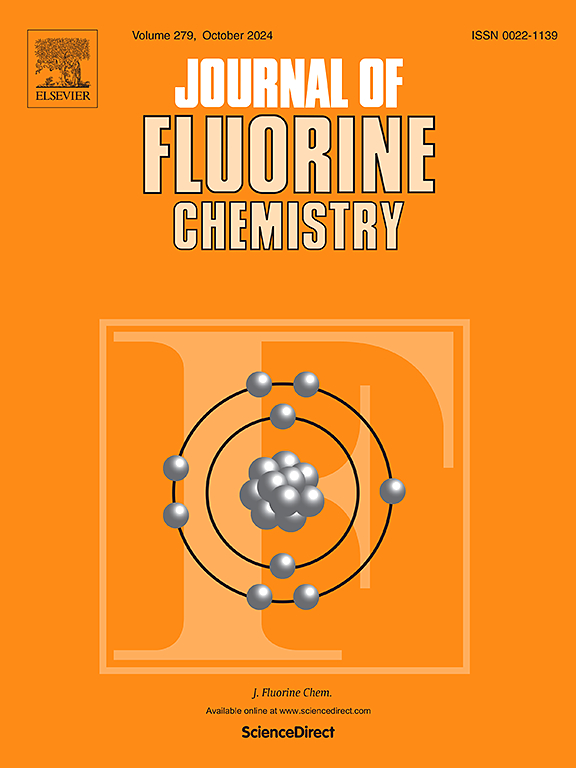碳和氮化硼纳米管用作ClF3传感器的新见解:密度泛函理论分析
IF 1.7
4区 化学
Q3 CHEMISTRY, INORGANIC & NUCLEAR
引用次数: 0
摘要
采用密度泛函理论研究了氮化碳和碳纳米管对ClF3的吸附能力。研究了其电子性质,包括HOMO和LUMO能、态密度、化学势、亲电性指数、柔软度、硬度和自然键轨道分析。我们的研究结果表明,在所研究的管中,(6,0)碳纳米管更适合吸附ClF3分子。ClF3在纳米管上的吸附显著降低了纳米管的能隙和硬度参数。这一因素增加了体系的导电性。模型的吸附能均为负,说明吸附过程在热力学上是有利的,配合物是稳定的。此外,在这些化合物中,(6,0)CNT- ClF3具有最大的吸附能。QTAIM计算证实了观察到的吸附能。本文章由计算机程序翻译,如有差异,请以英文原文为准。

New insights into the use of carbon and boron nitride nanotubes as sensors for ClF3: A density functional theory analysis
The ability of born nitride and carbon nanotubes to adsorb ClF3 was investigated by the density functional theory method. The electronic properties including HOMO and LUMO energies, density of states, chemical potential, electrophilicity index, softness, hardness, and natural bond orbital analysis were studied. Our findings indicate that among the studied tubes the (6,0) CNT is more suitable for adsorbing ClF3 molecule. The adsorption of ClF3 on the nanotubes significantly reduces the energy gap and hardness parameters of the tubes. This factor increases the conductivity of the system. The adsorption energies in the investigated models are negative, which confirm that the adsorption process is thermodynamically favorable and the complexes are stable. Also, among these compounds, (6,0) CNT- ClF3 has the greatest adsorption energy. QTAIM calculations confirm the observed adsorption energies.
求助全文
通过发布文献求助,成功后即可免费获取论文全文。
去求助
来源期刊

Journal of Fluorine Chemistry
化学-无机化学与核化学
CiteScore
3.80
自引率
10.50%
发文量
99
审稿时长
33 days
期刊介绍:
The Journal of Fluorine Chemistry contains reviews, original papers and short communications. The journal covers all aspects of pure and applied research on the chemistry as well as on the applications of fluorine, and of compounds or materials where fluorine exercises significant effects. This can include all chemistry research areas (inorganic, organic, organometallic, macromolecular and physical chemistry) but also includes papers on biological/biochemical related aspects of Fluorine chemistry as well as medicinal, agrochemical and pharmacological research. The Journal of Fluorine Chemistry also publishes environmental and industrial papers dealing with aspects of Fluorine chemistry on energy and material sciences. Preparative and physico-chemical investigations as well as theoretical, structural and mechanistic aspects are covered. The Journal, however, does not accept work of purely routine nature.
For reviews and special issues on particular topics of fluorine chemistry or from selected symposia, please contact the Regional Editors for further details.
 求助内容:
求助内容: 应助结果提醒方式:
应助结果提醒方式:


